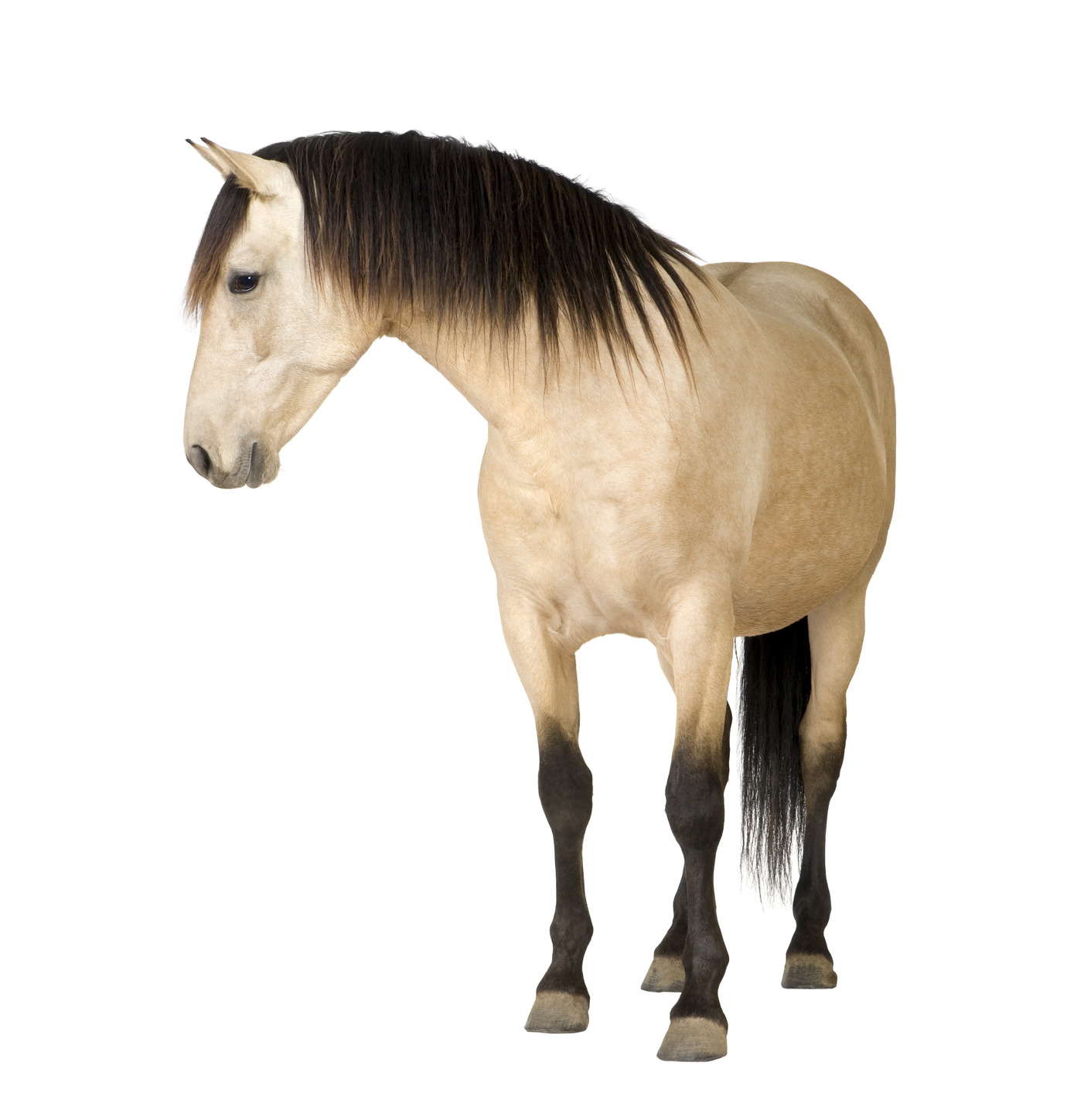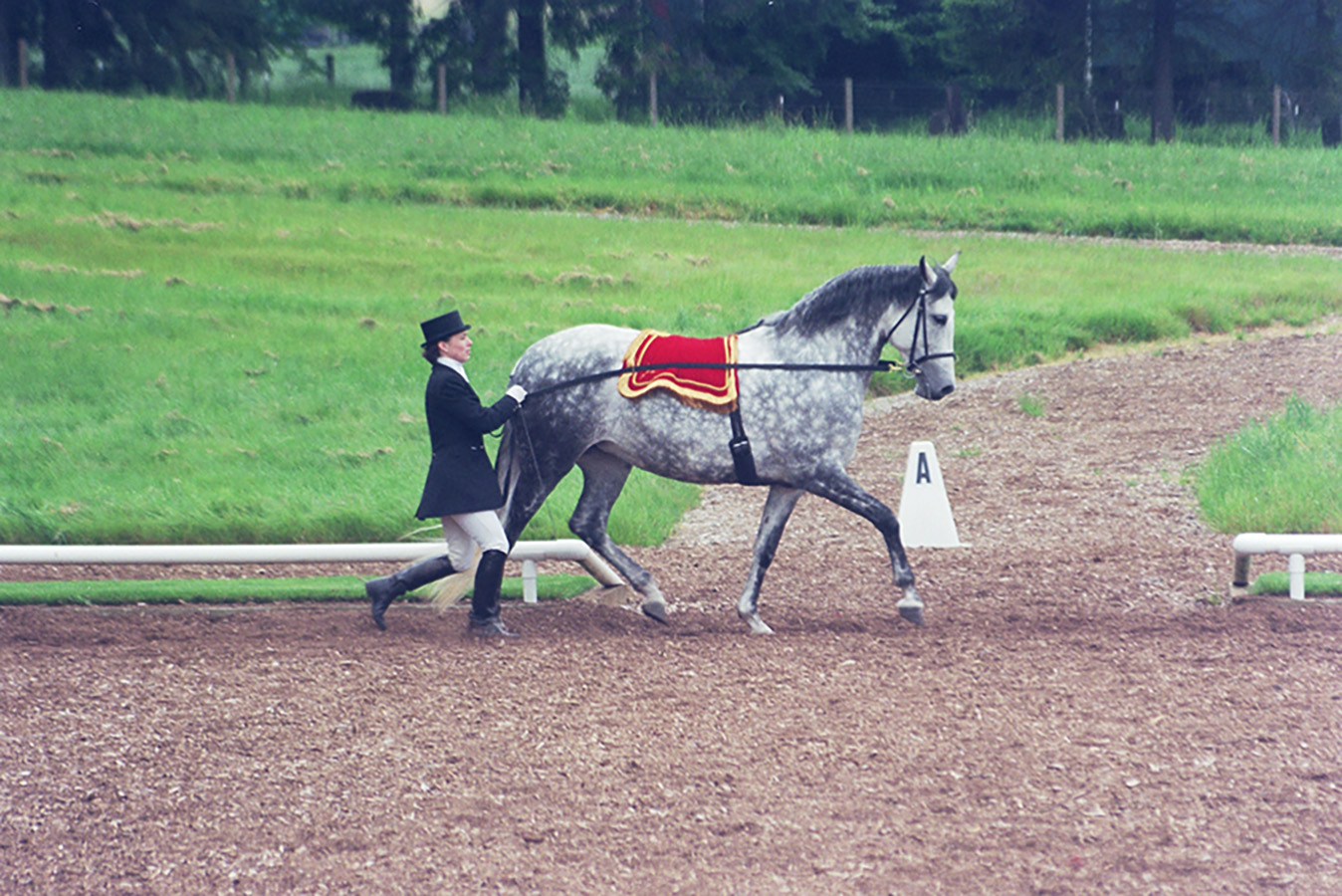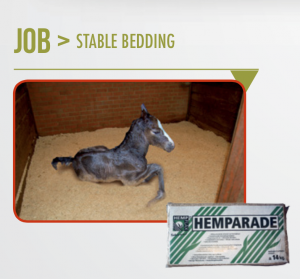
Colour Genetics
Colour Genetics –
Understanding the Basics
Written By SHEREE CONROY with thanks to Leanne Owens
(article appeared in issue 14 (2014) of BHM)
The Basics
 When learning about horse colour genetics, the first thing to know is that there are only two base colours: black and red – everything else you see is a modification of those two colours. So, step one in understanding what causes different horse colours is to remember these two base colours, black based (written as ‘E’ on a DNA test) and red/chestnut based (written as ‘e’ on a DNA test). From here, colour modifying genes work on the two base coat colours to create all the other colours, dilutions, patterns, patches and spots that we see. Without any other colour modifiers, horses would be just black or chestnut without any white on them or any other shadings or markings. As soon as a horse has a star or sock, or is any other shade, or colour that is different from straight black all over or straight chestnut all over, you know that there are colour modifying genes present.
When learning about horse colour genetics, the first thing to know is that there are only two base colours: black and red – everything else you see is a modification of those two colours. So, step one in understanding what causes different horse colours is to remember these two base colours, black based (written as ‘E’ on a DNA test) and red/chestnut based (written as ‘e’ on a DNA test). From here, colour modifying genes work on the two base coat colours to create all the other colours, dilutions, patterns, patches and spots that we see. Without any other colour modifiers, horses would be just black or chestnut without any white on them or any other shadings or markings. As soon as a horse has a star or sock, or is any other shade, or colour that is different from straight black all over or straight chestnut all over, you know that there are colour modifying genes present.
Step two in understanding horse colour genetics is to realise that each horse has two base coat colour genes. One of these has come from the sire, and one from the dam. These can both be black based (EE) in which case the horse will look black, bay or brown or they can both be red (ee) in which case the horse will look chestnut. If the horse can have one black and one red base coat (Ee) and it will still look black, bay or brown. This is because red is recessive and black is dominant, meaning the red gene will ‘hide behind’ black and you won’t know it’s there by looking at the horse.
Step three to understand colour is learning about Agouti (A or At). It is a modifier that works on horses with black based coats (EE or Ee) to make the coat lighter coloured (brown), and restrict the black colour to the points (mane, tail and legs). There are different types of Agouti that then make horses appear either brown or bay. Brown Agouti (At) makes black horses appear any shade of brown, from quite light, to almost black. Bay Agouti (A) makes black horses appear bay. A horse that has both brown Agouti and bay Agouti (A/At) will appear bay as brown is recessive and bay is dominant, so the brown ‘hides behind’ the bay Agouti. Agouti does not express on red. This means a chestnut horse (ee) can carry one or two copies of Agouti (‘ee Aa’ or ‘ee AA’ or ‘ee Ata’ or ‘ee AAt etc) and it will look no different from a chestnut without Agouti (ee aa). Also, a black horse does not have any Agouti (EE aa or Ee aa). As with the base colour genes, one Agouti has come from the sire, and one from the dam. If a horse is homozygous for Agouti, it means it has two copies of Agouti and it is written as AA. If a horse is heterozygous for Agouti, it means it has one copy of Agouti and it is written as Aa. If a horse does not carry Agouti at all, it is aa (so a black horse would be EE aa or Ee aa).
So that gives us our four common colours: chestnut, black, brown and bay and a brief explanation of the colour genetics ‘alphabet soup’ that can seem so confusing. Obviously though, there are many other equine colours, so there are other colour modifying genes which also have letters to signify them. These include Cream (Cr), Grey (G), Champagne (Ch), Tobiano (TO) and many others. So where do these colours come from? All of the genes for horse colour occur in pairs. Each horse then inherits one of the pair from the dam, and the other one from the sire.
Perhaps it might help to think of the genes in every horse (or animal or plant) as an enormously long train with the carriages arranged in a very particular order, and every carriage on that train carries two compartments (two spaces for each gene) – in each of those carriages, one compartment comes from the dam, the other from the sire. Each parent is responsible for putting information into their half of every carriage. So, every horse has a carriage in position for the Cream gene, but if the parents don’t have Cream, they can’t ‘fill’ their half of the Cream carriage. This means that it will be empty, or n/n.

If one parent carries Cream, then they can fill that part of the offspring’s Cream carriage, so now the offspring’s Cream carriage has Cream in one half, and the other half is still empty (Cr/n). If both parents carried Cream, they could each fill half of the offspring’s Cream carriage, so both places would be filled and the test would be Cr/Cr. The other possibility if they are both heterozygous for Cream (Cr/n and Cr/n), is they can pass on the ‘empty Cream space’ so the foal is still n/n or cr/cr even though both parents have one Cream gene each).
When it comes time for horses to breed, they fill one half of every one of their carriages into the next generation, but this occurs at random – you don’t know which half they will fill, just that one of the compartments in every one of their carriages will be given the offspring. If the Cream carriage is empty in both halves (n/n), then it doesn’t matter which half is given to the offspring, they can only pass on the empty space. If only one half of the carriage has Cream (Cr/n – heterozygous for Cream), and that half of the carriage is given the offspring, they pass on Cream. However, if they pass on the empty half they don’t pass on Cream (50% chance of either happening). If both halves of the carriage are filled with Cream (Cr/Cr – homozygous for Cream), then it doesn’t matter which half they pass on, the offspring will always get a Cream gene.
In fact, for every trait, from colour to genetic diseases, each horse has two sets of information about it, one from each parent. The information is either that the trait is absent, sometimes written as ‘n’ for negative, or it is present, written with the capital letter representing that trait. For instance, with ‘Cr’ meaning Cream, a horse that is homozygous for Cream would be Cr/Cr meaning there are two Cream genes. This would appear either cremello (if a red based coat is present) or perlino (if a black based coat is present). A heterozygous Cream, which appears buckskin or palomino, would be Cr/n meaning only one Cream gene is present, and a horse that is negative for Cream could be ‘n/n for Cream’.
The interaction of the base coat colour genes, Agouti and other colour modifying genes will all then impact on the colour that we see on the horse. As stated above, chestnut horses have a base coat of 2 red colour genes (ee). If that horse then has a copy of the Cream gene from either parent, it will be ee Cr/n, and will be a palomino. If it had a copy of the Cream gene from both parents, it would be ee Cr/Cr, and will be cremello. If a chestnut horse (ee n/n for Cream) is bred to a cremello horse (ee Cr/Cr) all of those offspring will be palomino, as all will be eeCr/n. If 2 palomino horses are bred to each other, the possible colours of the foals would be palomino (ee Cr/n – 50%), chestnut (ee n/n – 25%) or cremello Cr/Cr – 25%), depending on how many Cream genes the foal was given by each parent.
(insert picture which relates to the above paragraph ? as a box next to it)
It becomes more complex when considering buckskin horses, as there are more possibilities here for the base coat, and the presence or absence of Agouti will also affect the colour that we see. A buckskin horse must have at least one black based gene, but may have 2, so will be Ee or EE as a base coat. It then has a Cream gene from one parent. To lighten the coat colour, leaving black ‘points’, it will then need at least 1 Agouti (Aa or AA). If it does not have an Agouti, it will be a black buckskin or smoky black (EE aa Cr/n or Ee aa Cr/n). This means that although the Cream gene is present, without Agouti it will not be as obviously expressed on the coat.
The Grey gene is another colour modifier that is dominant. This means if the Grey gene is present, it will always be expressed on the horses’ colour and the horse will go grey when it is older. Grey horses are always born as a base colour, and then the Grey gene works on the base. It will hide whatever underlying colour was present as the horse greys out. A horse may be heterozygous for Grey gene, or homozygous for Grey. A horse which is homozygous for the Grey gene will always produce Grey foals, as all of its offspring will get a copy of the Grey gene from the grey parent.
This has been only a very basic summary of some of the main horse colours. As you can see, it is quite complex, and it is not always easy to try and work out what the colour of a foal from a particular mating will be, without knowing the genetic base colours of the dam and sire. Even then, there are still only probabilities of certain coloured foals appearing, it is uncommon to know exactly what colour will be produced, and part of the excitement when a foal is born.




